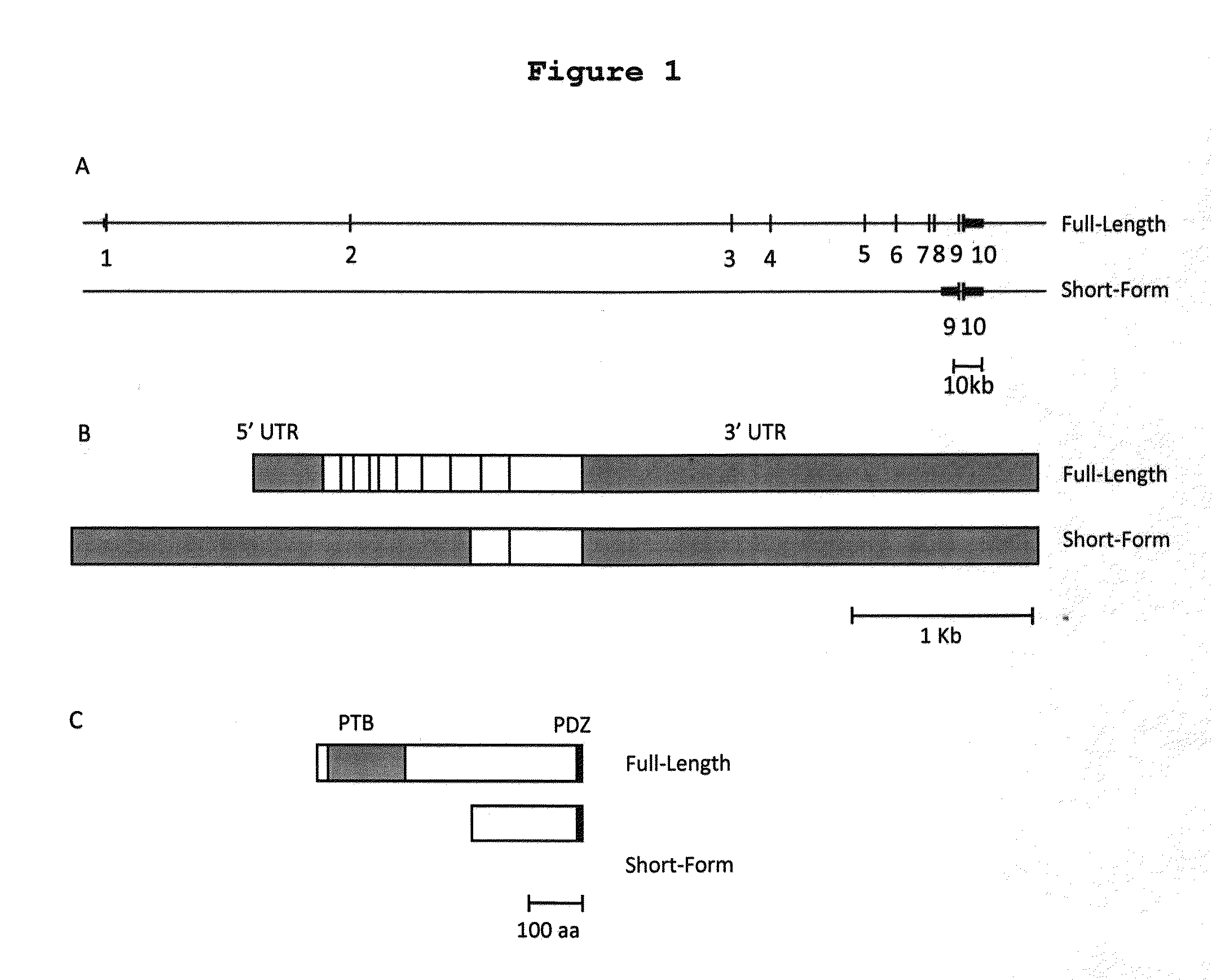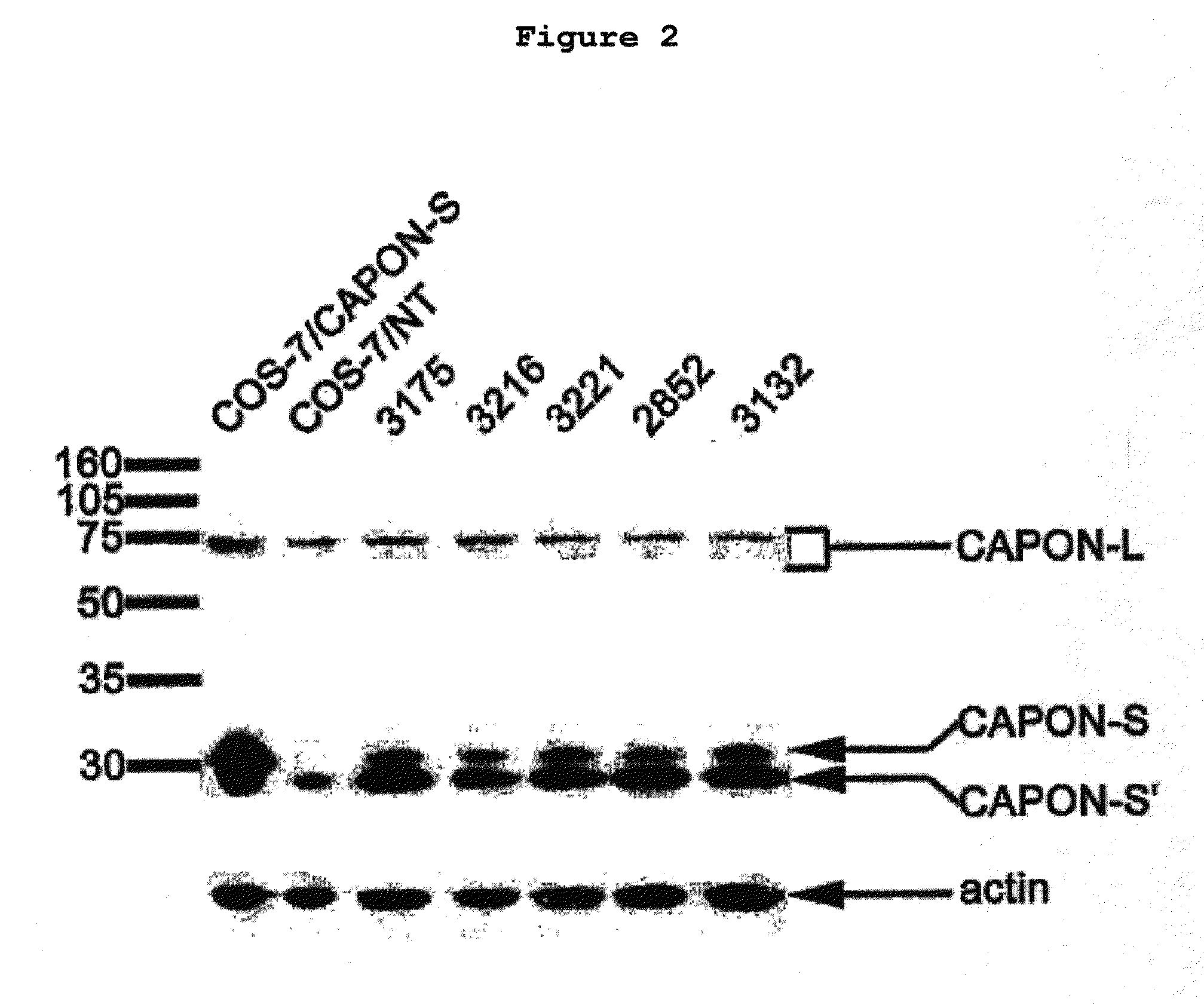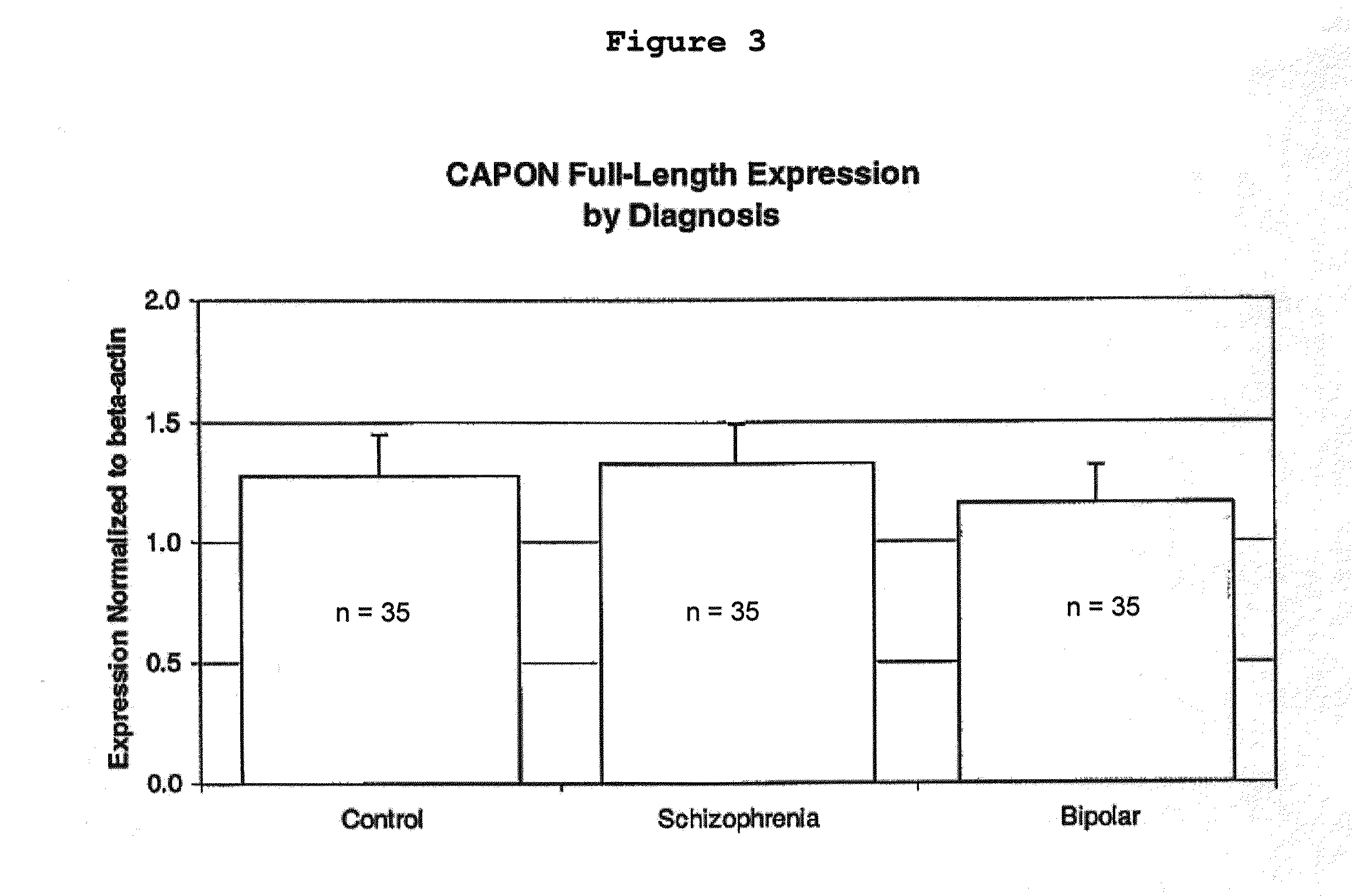Methods and Compositions for the Diagnosis and Treatment of Schizophrenia
- Summary
- Abstract
- Description
- Claims
- Application Information
AI Technical Summary
Benefits of technology
Problems solved by technology
Method used
Image
Examples
example i
[0085]The NOS1AP gene (GenBank Accession No. NM—014697) has been previously identified as an attractive candidate for schizophrenia susceptibility. NOS1AP was first identified in the rat as a neuronal nitric oxide synthase (nNOS) binding protein, capable of disrupting the association of nNOS with the postsynaptic density scaffolding proteins PSD93 and PSD95 through the binding of the C-terminus of NOS1AP to nNOS (Jaffrey et al. 1998). The interaction between nNOS and PSD93 and PSD95 is important in targeting nNOS to the postsynaptic N-methyl-D-aspartate (NMDA) receptor complex, and facilitates the tight coupling between activation of the NMDA receptor and nNOS, allowing nNOS activation by Ca++ influx through the NMDA receptor, producing NMDA receptor-mediated nNO release into the synaptic structures (Brenman et al. 1996a; Brenman et al. 1996b). This places NOS1AP at the site of NMDA glutamate neurotransmission, long proposed to be involved in schizophrenia (reviewed in Coyle et al. ...
example ii
[0112]In this example, the effects of overexpression of NOS1AP protein in neurons were examined using primary cultures of hippocampal neurons. cDNAs encoding the full-length NOS1AP protein (SEQ ID No. 2) and NOS1AP-S protein (SEQ ID No. 4) were separately cloned into expression vectors and transfected along with GFP (to elucidate neuronal morphology) at 10 days in vitro, a time when dendrite outgrowth and branching is rapidly occurring. It was hypothesized that NOS1AP may affect dendrite number since the NMDA receptor has been implicated in playing a role in regulating dendrite number, and overexpression of NOS1AP is thought to disrupt NMDA receptor signaling. Two days after transfection, the neurons were fixed, and dedrites were counted as described in Akum et al., Nat Neurosci 2004 February; 7(2):145-52, 2004 and Chen et al., Mol Biol Cell 2005 November; 16(11):5103-14. As shown in FIG. 6, the neurons transfected with NOS1AP-L isoform exhibit significantly (p<0.05) decreasing prim...
example iii
[0114]During neuronal development, two processes take place before proper communication between neurons can be created: 1) targeting of synaptic proteins to correct pre- and postsynaptic sites and 2) establishment of stereotypical dendritic arborization patterns for specific neurons (Vetter et al., 2001; Schaefer et al., 2003). On the other hand, various neurological disorders are associated with disturbed receptor signaling and dendritic branching. For example, dendritic field size is smaller in layer V pyramidal cortical neurons in schizophrenic patients (Black et al., 2004) and truncation of the protein encoded by Disrupted-in-Schizophrenia-1 results in decreased neurite outgrowth in PC12 cells (Miyoshi et al., 2003; Ozeki et al., 2003). Decreased dendrite number and / or branching is also seen in a number of developmental disorders such as autism, Rett Syndrome, Down Syndrome and unclassified mental retardation (Zoghbi, 2003). Despite significant progress in the field, understandi...
PUM
 Login to View More
Login to View More Abstract
Description
Claims
Application Information
 Login to View More
Login to View More - R&D
- Intellectual Property
- Life Sciences
- Materials
- Tech Scout
- Unparalleled Data Quality
- Higher Quality Content
- 60% Fewer Hallucinations
Browse by: Latest US Patents, China's latest patents, Technical Efficacy Thesaurus, Application Domain, Technology Topic, Popular Technical Reports.
© 2025 PatSnap. All rights reserved.Legal|Privacy policy|Modern Slavery Act Transparency Statement|Sitemap|About US| Contact US: help@patsnap.com



